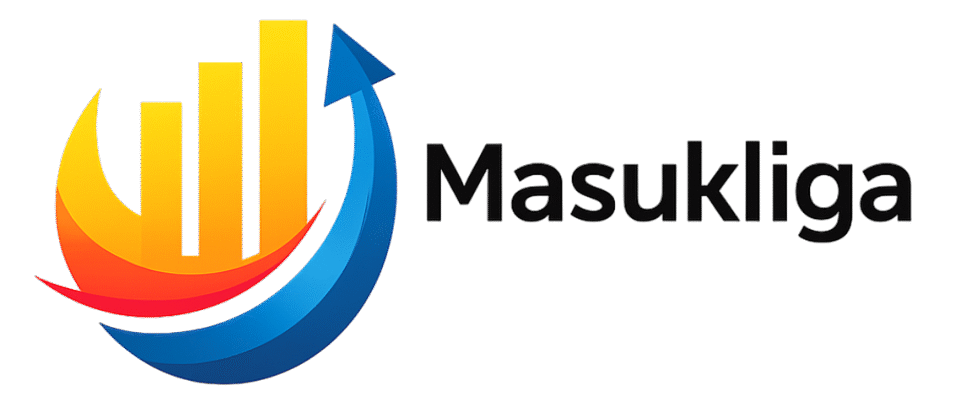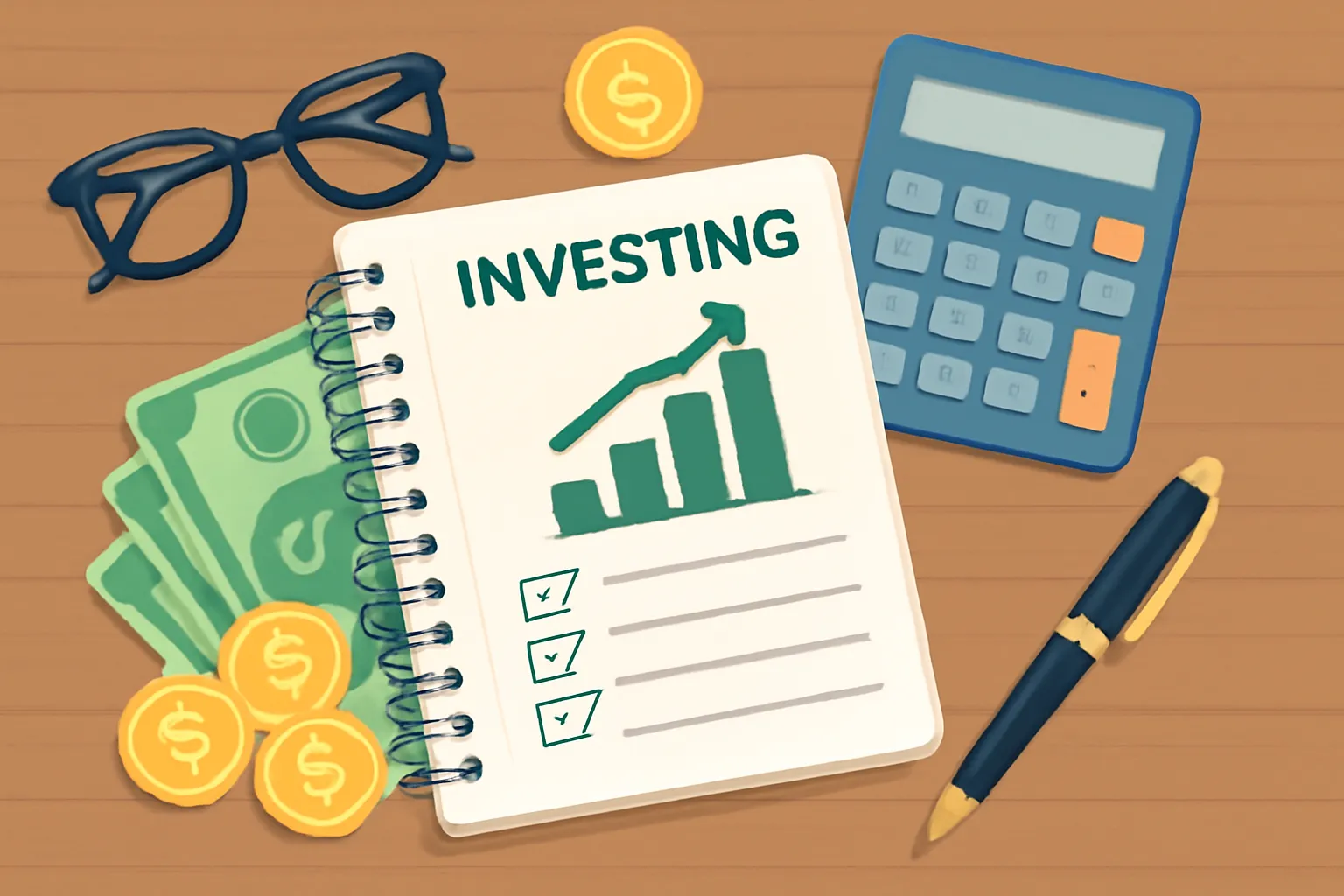Not financial advice. This educational guide explains concepts and common approaches to investing. Your situation is unique; consider consulting a qualified financial professional before implementing any strategy.
How to Start Investing in 2025: A Practical Introduction
Whether you’re asking how to start investing, how to begin investing with $50, or how to get started in the stock market without prior experience, the core playbook is the same: set your financial foundation, choose the right accounts and tools, build a simple diversified portfolio, and automate your path. What’s changed in 2025 is not the fundamentals, but the friction: it’s easier than ever to open an account, buy fractional shares, and keep costs low. The hard part is staying disciplined.
This step-by-step guide walks you through the entire process—mindset, accounts, investments, tax considerations, and behavioral guardrails—so you can confidently say, “I know how to start investing today.” Along the way, you’ll find checklists, examples, and practical tips tailored to first-time investors and those restarting their investing journey.
Why Invest at All? The Case for Starting Today
Investing is not about chasing headlines or outsmarting the market; it’s about compounding toward your life goals. Even modest amounts, invested consistently, can grow into significant sums over decades. Waiting for the “perfect time” usually means missing out on returns. Historically, markets have rewarded patient investors for bearing risk—though past performance never guarantees future results.
- Inflation hedge: Cash loses purchasing power over time. A diversified portfolio aims to outpace inflation.
- Compounding: Gains can generate more gains. Time is the crucial ingredient.
- Goal alignment: From retirement to home down payments, investing helps bridge the gap between income and long-term needs.
In short, the best day to invest may have been years ago; the second best day is today. If you’re wondering how do you get started with investing in a sensible way, the rest of this guide offers a clear roadmap.
Set Your Foundation: Cash Buffer, Debt, and Insurance
Before you dive in, protect your downside. The goal is to avoid selling investments at the wrong time because of an emergency.
- Emergency fund: Aim for 3–6 months of essential expenses in a high-yield savings account. If your income is variable, consider 6–12 months.
- High-interest debt: Prioritize paying off high-interest credit cards or loans. The “return” from eliminating 20% APR debt is often unbeatable.
- Insurance: Ensure adequate health, disability, renter’s/homeowner’s, and auto coverage. If others rely on your income, consider term life insurance.
Building this base isn’t glamorous, but it’s the engine of sustainability. It’s how you start investing the right way—with resilience.
Clarify Goals and Time Horizons
Investing is a means to an end. Create a simple map:
- Short-term (0–3 years): Prioritize capital preservation. Think savings accounts, CDs, or short-term Treasuries.
- Medium-term (3–10 years): Balance growth and stability. Mix of stocks and bonds, calibrated to your risk tolerance.
- Long-term (10+ years): Emphasize growth. Higher stock allocation historically offers higher potential returns with more volatility.
When people ask how to start investing for retirement versus how to invest for a home in five years, the answer differs because the time horizon differs. Pick an asset allocation that matches your goals and the timeline for each goal.
Know Your Investment Choices: Asset Classes 101
Stocks and Stock Funds
Stocks represent ownership in companies. They tend to be volatile but historically have offered higher long-term returns. Most beginners use index funds or exchange-traded funds (ETFs) for broad, low-cost exposure—such as total U.S. market or total world market funds.
- Pros: High growth potential, diversified via funds, low cost with index funds.
- Cons: Short-term volatility, emotional difficulty during market drops.
Bonds and Cash Equivalents
Bonds are loans to governments or companies. They pay interest and can stabilize your portfolio. Consider diversified bond funds or Treasury securities. Cash equivalents like money market funds or high-yield savings accounts offer liquidity and low risk.
- Pros: Lower volatility, income, ballast during stock downturns.
- Cons: Lower long-term returns than stocks; interest-rate sensitivity.
Real Estate
Beyond owning property directly, investors can use REITs (real estate investment trusts) to gain exposure to real estate in a liquid fund format. REITs can diversify income sources but can be volatile and tax-inefficient in taxable accounts.
Alternatives and Digital Assets
Commodities, private equity, and cryptocurrencies are considered alternatives. For beginners, these are optional and higher risk. If you venture here, keep allocations small and understand the unique risks, liquidity constraints, and tax treatment.
Understand Risk, Return, and Diversification
Risk Capacity vs. Risk Tolerance
Risk capacity is how much risk your financial situation can handle. Risk tolerance is how much volatility you can emotionally tolerate without abandoning your plan. Align both with your time horizon.
Volatility vs. Permanent Loss
Markets fluctuate. Volatility is normal; permanent loss is typically the result of selling low, concentration risk, or leverage. A diversified portfolio reduces the chance of permanent capital impairment.
Diversification Basics
Diversification means spreading bets across assets, sectors, and geographies. It aims to reduce risk without sacrificing expected return. Low-cost global index funds are the simplest path to diversification.
Choose the Right Accounts First: Tax-Advantaged vs. Taxable
If you’re figuring out how to start investing, pick accounts before picking funds. The account “wrapper” can reduce taxes and accelerate compounding.
Workplace Plans (401(k), 403(b), 457)
- Free match: Contribute at least enough to get the employer match—it’s a guaranteed return.
- Traditional vs. Roth: Traditional contributions reduce taxable income now; Roth contributions grow and withdraw tax-free in retirement (subject to rules).
- Fees matter: Favor the lowest-cost index funds available in your plan lineup.
IRAs: Traditional vs. Roth
IRAs extend tax advantages beyond your workplace plan. Income limits and deductibility rules apply; check current IRS rules for 2025 specifics before contributing.
- Traditional IRA: Potential tax deduction now; taxes due on withdrawals later.
- Roth IRA: No deduction now; qualified withdrawals are tax-free later. Contributions (not earnings) can often be withdrawn tax- and penalty-free, giving flexibility.
Health Savings Account (HSA)
With a qualifying high-deductible health plan, an HSA offers triple tax advantages: pre-tax contributions, tax-free growth, and tax-free withdrawals for qualified medical expenses. Often the most tax-efficient account available.
Taxable Brokerage
After tax-advantaged accounts, a taxable brokerage account offers flexibility—no contribution limits or withdrawal penalties. Place tax-efficient funds here (broad market index ETFs) and be mindful of capital gains taxes.
Note: Annual contribution limits for retirement accounts can change. Always verify current 2025 limits with official sources.
Pick a Platform: Brokerages, Robo-Advisors, and Apps
- Traditional brokerages: Full-featured platforms with research, multiple account types, and low/no commissions on many ETFs.
- Robo-advisors: Automated portfolios using ETFs and rebalancing; charge an advisory fee. Good for “set-it-and-forget-it” beginners.
- Micro-investing apps: Round-ups and small contributions, often with easy UX. Check fees to ensure they don’t eat small balances.
When comparing, prioritize low fees, no account minimums (if possible), fractional shares, automatic investments, and solid customer support.
Design a Simple, Durable Portfolio
Beginners often overcomplicate. Simplicity helps you stick with the plan.
The Three-Fund Portfolio
- Total U.S. stock market fund
- Total international stock market fund
- Total bond market fund
Set your stock/bond mix based on risk and time horizon (for example, 80/20 for long-term, 60/40 for medium-term). The international stock allocation often ranges from 20% to 50% of your stocks, depending on preference.
Target-Date Funds
Target-date funds automatically adjust stock/bond mix as you approach a target year (e.g., 2065). They are a good answer to “what should I buy first if I’m starting to invest?” Make sure you understand fees and the fund’s glidepath.
Factor or Tilt Options
If you want modest customization, you might add a small tilt to small-cap value or use REITs.

